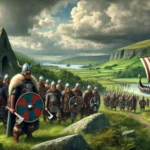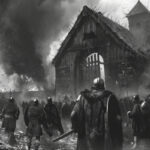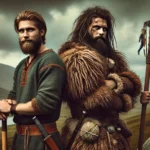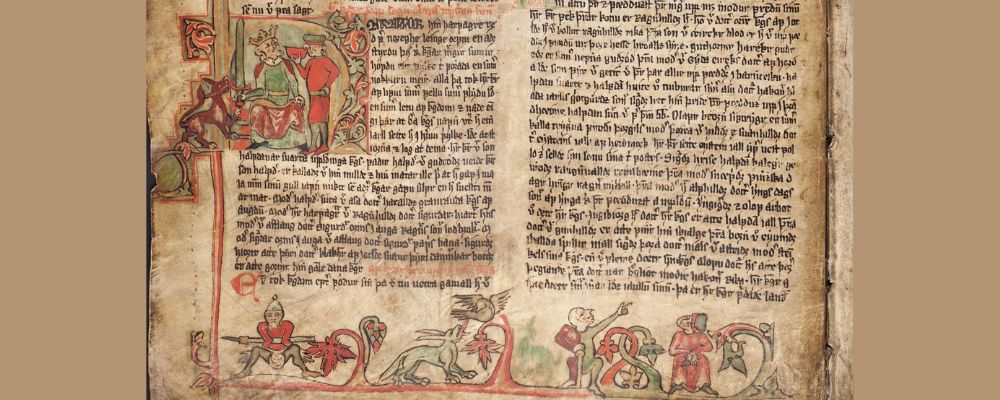
An Introduction to the Norse Sagas
The Norse Sagas are legends and histories about the Viking Age that were composed predominantly in Iceland from the late 12th century onwards.
Today, more than 40 individual sagas are preserved in a variety of manuscripts.
Read on to discover the historical context of the Norse Sagas and a synopsis of the most famous Norse Sagas to add to your reading list (with links to English translations).
The Sagas and the Old Norse Literary Tradition
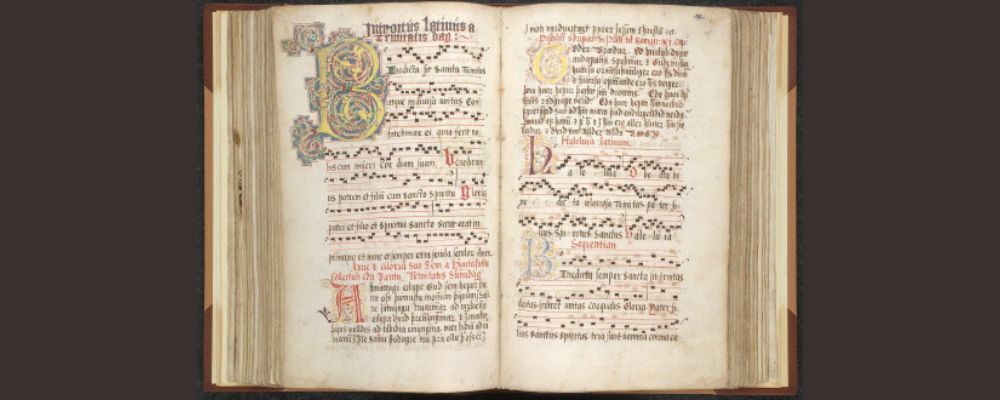
While some people claim that the Sagas represent stories that were passed down orally for centuries before being recorded by scribes, others believe that they were composed not long before they were written and represent Iceland as it was in the day of the writers.
For example, when describing clothing, they may have described “old-fashioned” clothing popular a century earlier, but not in the period of the tale.
The truth probably lies somewhere between the two. Stories told by the Skalds were probably updated to suit the new genre and audience.
They are a mix of historic and legendary information, and some are entirely works of fiction, not dissimilar from modern historical fiction novels.
As well as providing historical information of questionable accuracy, the sagas stand out because the Vikings left behind so little written material.
Before the age of the Sagas, the Vikings did not seem to have drawn maps or written down poems or shopping lists to be found and analyzed by modern historians.
Regular writing only seems to have emerged with Christianity.
But the Sagas aren’t written in the Latin of church documents, but rather in Icelandic, a form of Old Norse, using a Latin transliterated script, rather than the runes which did not lend themselves to extended prose.
This suggests that while some of the stories in the sagas were about Christian Vikings, they were seen as something that belonged to a separate age and belonged in the common tongue.
Top 10 Norse Sagas
While there are dozens of Norse sagas out there, the ten below are the most popular and interesting when it comes to Viking history. If you want to start reading the sagas they are a great place to start.
Volsunga Saga
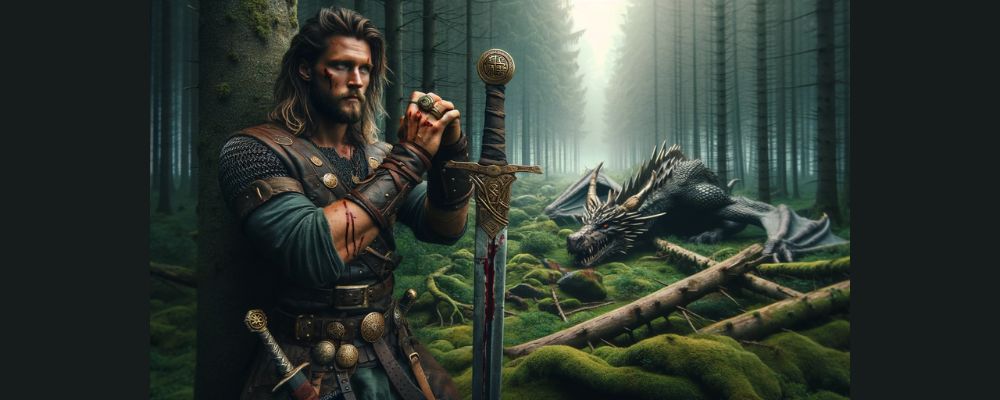
This saga was written in the 13th century by an unknown Icelandic author. The material covered is based on German legends from the Migration Period (400-700).
It starts with the legendary history of the Volsung family, who were favored by Odin throughout their rise, but often face tragedy.
The most famous member of the Volsunga family is Sigurd, who kills the dragon Fafnir and takes possession of the cursed ring Andvaranaut.
The stories of both Fafnir and the ring are included in the saga. Sigurd would also have a love story with the Valkyrie Brunhilde, that would end in tragedy, perhaps due to the cure of the ring.
The saga ends with the story of Sigurd’s widow Gudrun marring King Atili, better known as Atilla the Hun. She kills his two sons and feeds them to him before killing him in his sleep.
Read an English translation of the Volsunga Saga.
Heimskringla
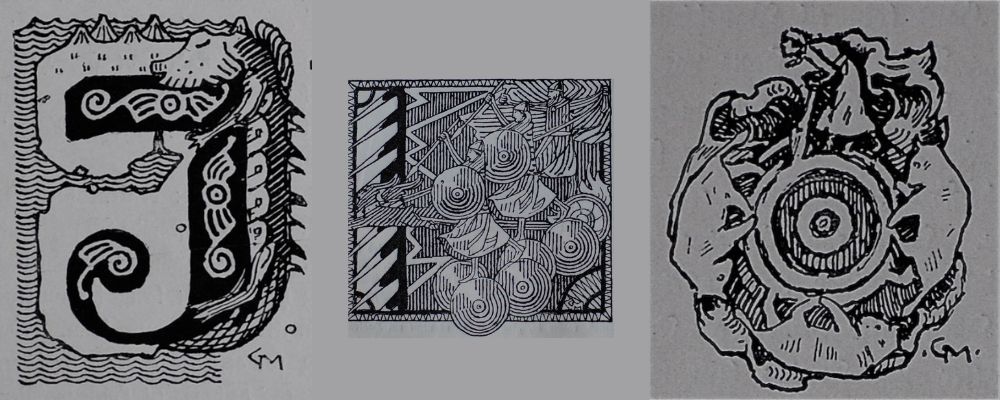
Written by the Icelandic author Snorri Sturluson in the early 13th century, it is a collection of semi-historical stories about Swedish and Norwegian kings.
It talks about the Ynglings, a legendary Swedish dynasty that claimed to be descended from Freyr, and the Vanir who arrived in Scandinavia with Odin.
The rest of the text deals with historical rulers known to have reigned in Norway starting with Harald Fairhair (9th century) and ending with Eystein Meyla (1177).
Some of the rulers whose lives are covered include Halfdan the Black, Hakon the Good, Olaf Tryggvason, and Harald Hardrada.
This last story includes Hardrada’s battles in England in 1066, where he died at the Battle of Stamford Bridge.
Read an English translation of the Heimskingla.
Ragnars Saga Lodbrokar

This is another saga written in Iceland in the 13th century about the legendary Ragnar Lothbrok, the semi-historical Swedish-Danish Viking hero, and his exploits across Scandinavia, England, and France.
The saga includes his various marriages, most famously to Lagertha and Aslaug, and the birth of his many sons, including Bjorn Ironside and Ivar the Boneless.
It also tells the story of Ragnar’s misguided attempt to conquer England with just two ships. This led to him being killed by King Aella of Northumbria in a snake pit.
While not covered in the saga, this would lead his sons to gather the Great Heathen Army and attack England in vengeance.
Read an English translation of the Saga of Ragnar Lothbrok.
Sturlunga Saga
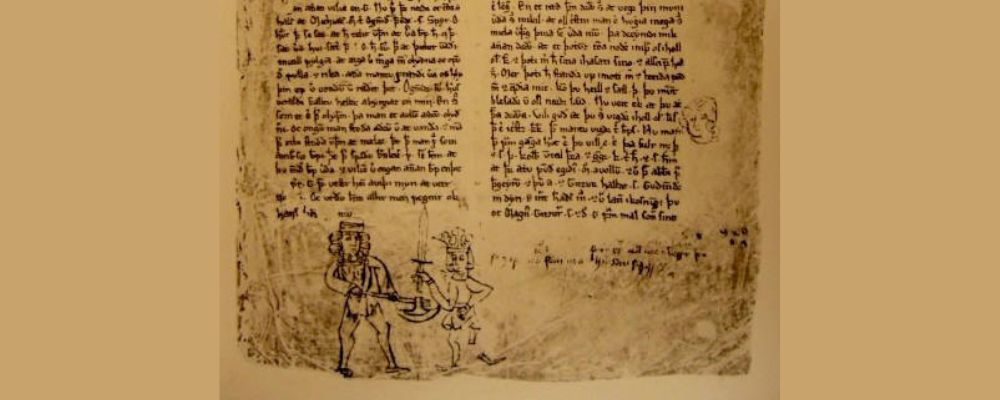
This is a collection of Icelandic sagas composed by different authors in the 12th and 13th centuries and then compiled into a single history.
It deals with the history of Iceland in the 12th and 13th centuries, with a focus on the Sturlunga family, who were a prominent family during a period of prolonged political strife in Iceland.
It starts with the story of Geirmundr Heljarskinn, a regional Norwegian ruler who moved to Iceland in the 9th century to escape the perceived tyranny of King Harald Finehair.
It then jumps forward to the 12th century and tells the stories of internal power struggles which eventually saw Iceland submitting to Norway in 1262-1264.
Read an English translation of the Sturlunga Saga.
Eiriks Saga Rauda

The Saga of Erik the Red was also written in Iceland in the 13th century and tells the story of Erik the Red, who established the Viking colony in Greenland after being banished from Iceland. It talks about how the community overcame famine in the early years of the settlement.
We also meet Erik’s son Leif and Thorstein.
Leif Erikson would go on to become the famous Viking who sailed to North America and started trading there.
It then recounts detailed stories about the exploits of Thorfinn Karlefni and his wide Gudrid in both North America and Greenland.
The saga includes many interesting elements including the best description of a Volva witch at work, an account of a draugr zombie, and the story of Freydis, a daughter of Erik the Red, singlehanded battling a group of North American natives while heavily pregnant.
Read an English translation of the Saga of Erik the Red.
Graenlendinga Saga
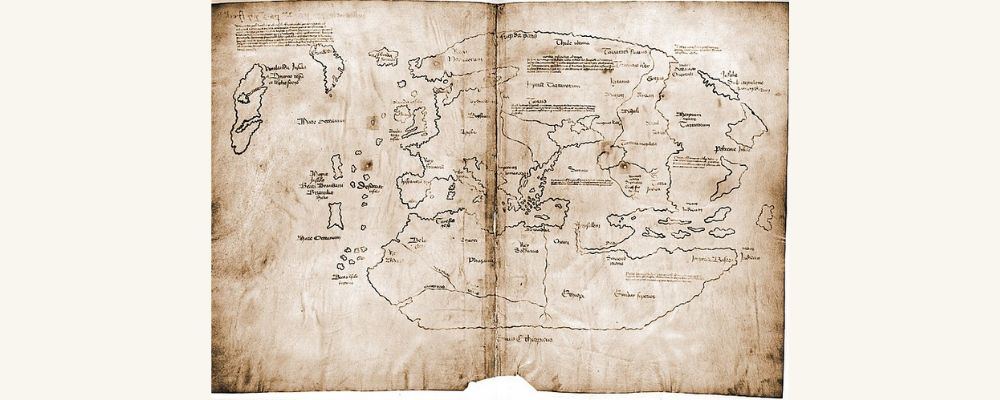
The surviving text of the Saga of the Greenlanders is preserved in a 14th-century manuscript, but it was probably composed about a century earlier.
It covers similar territory to the Saga of Erik the Red, telling of six expeditions to North America (Vinland) led by Bjarni, who told Leif Erikson the location, who was in turn followed by Thorvald, Thorstein and his wife Gudrid, Karlsefni, and Freydis.
The saga contains the story of Freydis allying with a pair of brothers to sail to the new world and work together, and then betraying them.
It is an interesting source for the portrayal of women and femininity in the Viking world.
Read an English translation of the Greenlander’s Saga.
Egils Saga

Egils Saga might be one of the most entertaining Icelandic texts to survive, recounting the like of Egill Skallagrimsson, a farmer, warrior, and skald who may have lived in the 10th century.
It tells the impossible story of a Viking lad who was already a heavy drinker at the age of three and was able to charm his host with his poetry.
He soon became a strong warrior, and accidentally killed a few people. Soon his exploits become deliberate and he seems like a loveable scoundrel.
He encounters problems when he makes an enemy of Queen Gunnhild of Norway, and therefore her husband Eric Bloodaxe.
This forces him to leave Norway and Iceland, and instead travel around and make his fortune. He travels to York, where he encounters the king and they are able to resolve their dispute, so Egill can return to Iceland and marry his brother’s widow.
Throughout the saga, the skald gets himself out of trouble by composing impressive verses, working a bit of rune magic, and relying on his sword as needed.
Read an English translation of Egils Saga.
Grettis Saga Asmundarsonar

Better known as just Grettir’s Saga, was written down in Iceland shortly before 1400.
It tells the story of Grettir the Strong and shows that authors were familiar with other cultural traditions, as it references Germanic legends that appear in other texts, such as the Old English poem Beowulf.
The first section talks about Grettir’s ancestors, essential to understanding the man in Viking thought. His great-grandfather left Norway to live in Iceland under Harald Fairhair.
Grettir himself decides to become a monster-slaying hero, emulating the old legends. He starts building a name for himself dealing with monsters, until he encounters a draugr (something between a zombie and a vampire) called Glamr.
While he kills Glamr, he is cursed to always be afraid of the dark and to see the draugr’s burning eyes whenever he closes his own.
This leads Grettir to become unlucky, and then an outlaw when he accidentally sets fire to a house and kills its occupants.
Pushed out of society, he is hunted by others until he eventually dies after 19 years, one year before his outlaw status would have been revoked.
The end of the saga sees Grettir’s brother Thorstein Dromund travel to the court of Constantinople to avenge his brother’s death and find love on the way.
He also joins a monastic order in Rome before he dies.
Laxdaela Saga
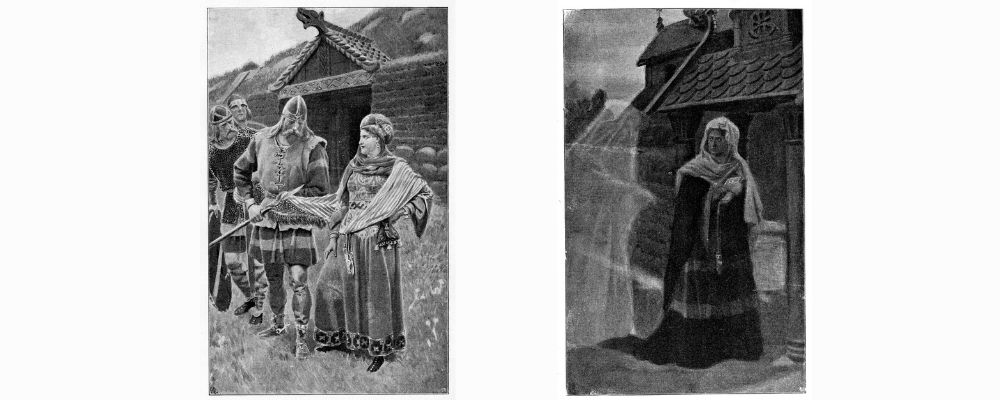
The Laxdaela Saga seems to have been popular in its day, with several copies surviving.
Written in the 13th century, it is set in Iceland between the 9th and 11th centuries.
Central to the story are two friends, Kjartan and Bolli, who grow up together but fall out when they both fall in love with a woman called Gudrun.
Gudrun is a bit of a villain, divorcing her first husband, killing at least one more, and having two more die in mysterious circumstances.
It offers a glimpse into the idea of blood feuds in Viking society.
The saga also talks about King Olaf of Norway’s work to convert Iceland to Christianity.
Read an English translation of the Laxdaela Saga.
Jomsvikinga Saga
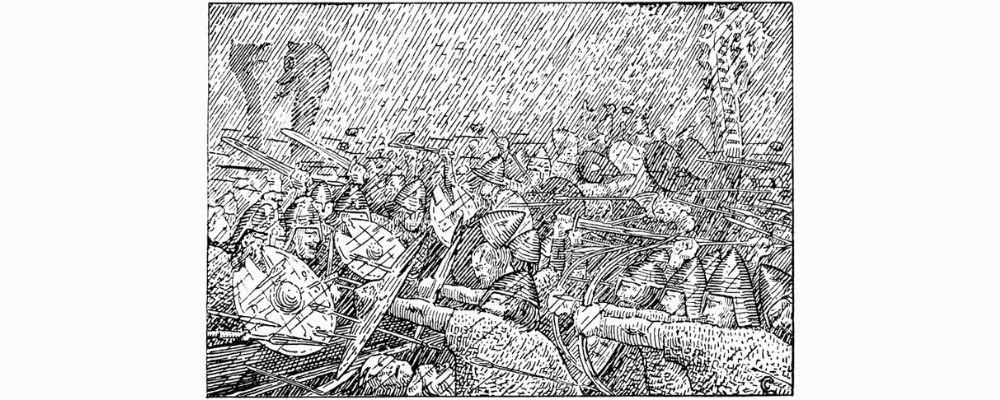
The Jomsvikinga Saga was written in Iceland in the 13th century and tells the story of the founding of a market town called Wolin, also known as Jomsborg, on the south coast of the Baltic Sea by a legendary Danish chieftain.
It then tells the story of a conflict between King Harald Gormsson of Denmark and King Hakon Sigurdarson of Norway and the people of Jormsborg, the Jomsvikings.
It also tells of the establishment of a special military brotherhood among the Jomsvikings that lived a semi-monastic life.
Five different manuscripts for the saga survive, and there are some strange inconsistencies between them.
Read an English translation of the Jomskivinga Saga.




